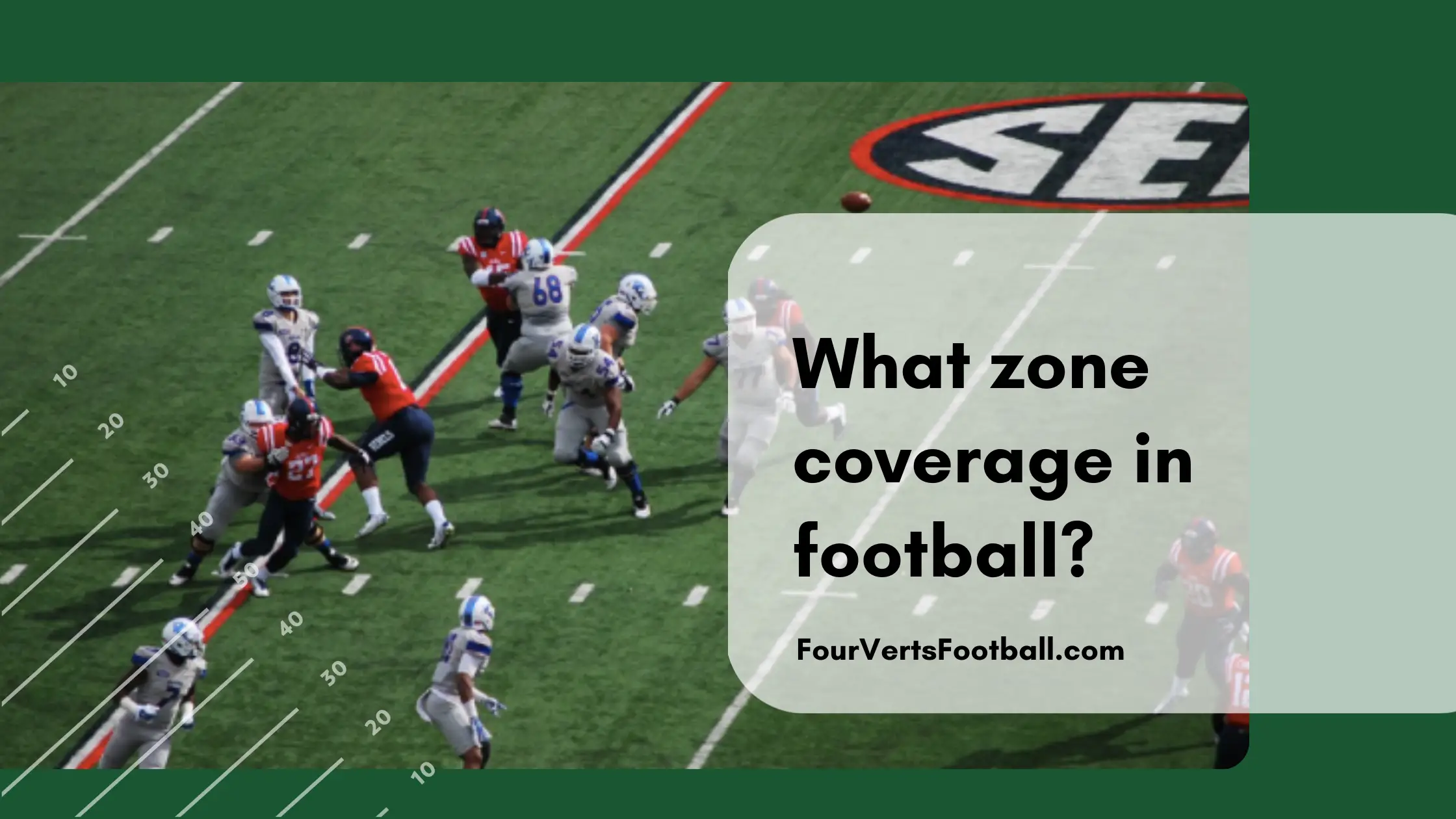Zone Coverage in football refers to defensive pass coverage which assigns specific areas of the field to different defensive players.
When stopping the opponents passing attack there are two types of coverage a defense can choose, man coverage and zone coverage.
As stated above zone coverage has defenders guarding certain areas of the field. While man coverage assigns defenders a specific player to cover for the duration of the play.
When playing in a zone defense almost all defenders on the field will have a portion of the field to cover if their opponents attempt to pass. The defensive line are the only defenders that do not usually have a zone to protect.
Though on some plays even the D-line will be tasked with stopping passes by covering the flat.
In some defensive strategies, the defense will play a combination of man and zone coverage to stop their opponents.
Usually, this involves man coverage being played by the cornerbacks and deep zones being played by safeties to help out if a deep pass comes their way.
Pros And Cones Of Zone Coverage
Now that you understand what zone coverage is in football it’s time to break down how and why this style of pass defense may help or hurt your team.
Pros
No Mismatches
One aspect of zone coverage that helps the defending team is that they do not have to worry about any mismatches.
In football, a mismatch occurs when a defensive player is tasked with stopping a noticeably higher-quality offensive player.
Offenses will look to generate mismatches and heavily target these defensive players that are not up to their assignment.
When playing zone coverage defenders will not be matched up with a specific player but rather a portion of the field.
Meaning the offense will not necessarily know who is going to be covering their receiver until the play starts. Additionally, players will only cover a receiver while they are in their zone.
This is much different than attempting to cover a receiver for the duration of the play. This means that the offense will not be able to take advantage of mismatches as a zone defense will rarely matchup up a defender against a specific offensive player.
Harder To Attack Your Weakest Defensive Back
A common tactic used by passing offenses is to find the defensive back that is weakest on the defense and target them. Regardless of which receiver they are covering the weakest defender can present an easy opportunity for the offense to gain yards.
When playing zone defense targeting the weakest defensive back each play is almost impossible. Since they will often play the same zone this means each play the team will have to target the same small portion of the field.
Additionally just because a defensive back does not have the ability to cover a receiver for a whole play does not me they cannot protect their zone.
Protecting a zone can be much easier than going stride for stride with a receiver on a passing route.
With man coverage, a defense is only as strong as its weakest link. While in zone coverage each player can contribute to the defense by protecting one portion of the field.
Heavily targeting a specific cornerback in zone defense is much less common when compared to man defense.
Cons
Holes In The Defense
One negative aspect of a zone defense in football is that there is always going to be holes in the defense. The defensive players will cover a large portion of the field but certain routes will always be open at some point during the play.
When playing experienced players they may be able to consistently find these holes in the zone defense.
Additionally passing players off between zones can be a difficult task. Receivers are sometimes able to find openings as these defenders pass off the coverage responsibilities from one to the other.
Cannot Shut Down Specific Receivers
When playing zone defense in football you will find that this coverage makes it hard to shut down specific receivers. In man coverage, it is not uncommon for cornerbacks to follow wide receivers around the formation.
This means the top cornerback may line up in front of the other team’s top receiver no matter where he lines up.
This can allow top-tier defensive backs to eliminate top offensive weapons from the game. When playing zone defense a team is not able to focus on specific receivers in this way.
That’s all on zone coverage check our articles on soft zone coverage or press coverage in football to learn more about pass defense in football.

